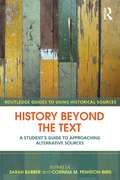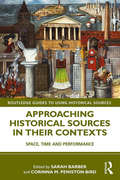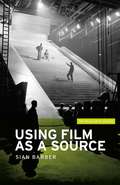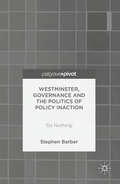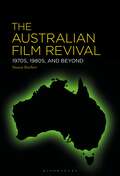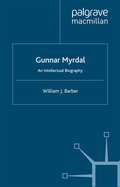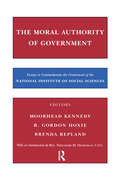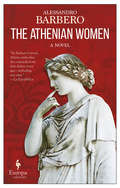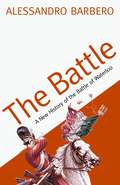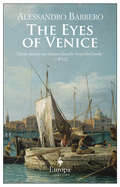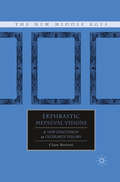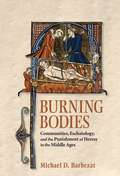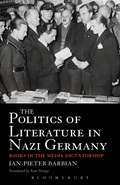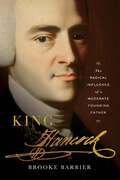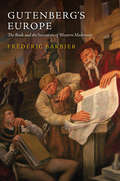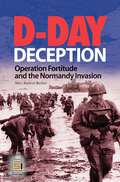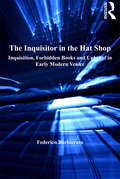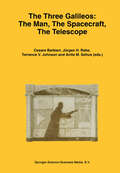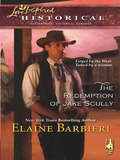- Table View
- List View
History Beyond the Text: A Student’s Guide to Approaching Alternative Sources
by Sarah Barber Corinna Peniston-BirdHistorians are increasingly looking beyond the traditional, and turning to visual, oral, aural, and virtual sources to inform their work. The challenges these sources pose require new skills of interpretation and require historians to consider alternative theoretical and practical approaches. In order to help historians successfully move beyond traditional text, Sarah Barber and Corinna Peniston-Bird bring together chapters from historical specialists in the fields of fine art, photography, film, oral history, architecture, virtual sources, music, cartoons, landscape and material culture to explain why, when and how these less traditional sources can be used. Each chapter introduces the reader to the source, suggests the methodological and theoretical questions historians should keep in mind when using it, and provides case studies to illustrate best practice in analysis and interpretation. Pulling these disparate sources together, the introduction discusses the nature of historical sources and those factors which are unique to, and shared by, the sources covered throughout the book. Taking examples from around the globe, this collection of essays aims to inspire practitioners of history to expand their horizons, and incorporate a wide variety of primary sources in their work.
Approaching Historical Sources in their Contexts: Space, Time and Performance (Routledge Guides to Using Historical Sources)
by Sarah Barber Corinna M. Peniston-BirdIn Approaching Historical Sources in Their Contexts, 12 academics examine how space, time and performance interact to co-create context for source analysis. The chapters cover 2000 years and stretch across the Americas and Europe. They are grouped into three themes, with the first four exploring aspects of movement within and around an environment: buildings, the tension between habitat and tourist landscape, cemeteries and war memorials. Three chapters look at different aspects of performance: masque and opera in which performance is (re)constructed from several media, radio and television. The final group of chapters consider objects and material culture in which both spatial placement and performance influence how they might be read as historical sources: archaeological finds and their digital management, the display of objects in heritage locations, clothing, photograph albums and scrapbooks. Supported by a range of case studies, the contributors embed lessons and methodological approaches within their chapters that can be adapted and adopted by those working with similar sources, offering students both a theoretical and practical demonstration of how to analyse sources within their contexts. Drawing out common threads to help those wishing to illuminate their own historical investigation, this book encourages a broad and inclusive approach to the physical and social contexts of historical evidence for those undertaking source analysis.
Using film as a source (IHR Research Guides)
by Sian BarberThis book is a hands-on study skills guide that explores how film and moving image can be used as sources. It is aimed at those who want to use film and moving image as the basis for research and offers advice on research methods, theory and methodology, archival work and film-based analysis. It draws on the disciplines of film and history to offer advice for students and researchers in these fields. The book includes sections on working with different kinds of moving images, how to explore visual sources, how to undertake film-related research and how to use film theory. In addition to providing detailed case studies, the guide also offers advice on research, writing and studying, creating a methodology, visiting archives, accessing material and exploring films from a historical perspective. The guide's focus is on good research practice, whether it be conducting an interview, visiting an archive, undertaking textual analysis or defining a research question.
Using film as a source (IHR Research Guides)
by Sian BarberThis book is a hands-on study skills guide that explores how film and moving image can be used as sources. It is aimed at those who want to use film and moving image as the basis for research and offers advice on research methods, theory and methodology, archival work and film-based analysis. It draws on the disciplines of film and history to offer advice for students and researchers in these fields. The book includes sections on working with different kinds of moving images, how to explore visual sources, how to undertake film-related research and how to use film theory. In addition to providing detailed case studies, the guide also offers advice on research, writing and studying, creating a methodology, visiting archives, accessing material and exploring films from a historical perspective. The guide's focus is on good research practice, whether it be conducting an interview, visiting an archive, undertaking textual analysis or defining a research question.
Westminster, Governance and the Politics of Policy Inaction: ‘Do Nothing’
by Stephen BarberThis book shows how political inaction has shaped the politics, economy and society we recognize today, despite the fact that policymakers are incentivised to act and to be seen to act decisively. Politicians make decisions which affect our lives every day but in our combative Westminster system, are usually only held to account for those which change something. But what about decisions to do nothing? What about policy which is discarded in favour of an alternative? What about opposition for naked political advantage? This book argues that not only is policy inaction an overlooked part of British politics but also that it is just as important as active policy and can have just as significant an impact on society. Addressing the topic for perhaps the first time, it offers a provocative analysis of ‘do nothing’ politics. It shows why politicians are rarely incentivized to do nothing, preferring hyperactivity. It explores the philosophical and structural drivers of inaction when it happens and highlights the contradictions in behavior. It explains why Attlee and Thatcher enjoyed lasting policy legacies to this day, and considers the nature of opposition and the challenge of holding ‘do nothing’ policy decisions to account.
The Australian Film Revival: 1970s, 1980s, and Beyond
by Susan BarberThe Australian Film Revival: 70s, 80s, and Beyond explores the matrix of forces – artistic, cultural, economic, political, governmental, and ideological – that gave rise to, shaped, and sustained this remarkable film movement. This engaging new study brings fresh perspectives, insights, and innovative approaches to a variety of films from a diversity of filmmakers. Areas of focus include the complex and contentious subjects of masculinity, femininity and feminism, the maternal, as well as the Indigenous road film and the protean Australian gothic. During the formative years of the revival, Australian films seemed to emerge from out of the blue in terms of global film history, with many features including Picnic at Hanging Rock (l975), Caddie (l976), The Last Wave (l977), The Chant of Jimmie Blacksmith (l978), and My Brilliant Career (l979) receiving international distribution and enthusiastic critical acclaim with strong box office results. By the time the film revival was in full swing, not only did Australian audiences flock to theaters to see “homegrown” films, but the quantity of Australian films on overseas screens was so high that ardent critics declared this outpouring an Australian “New Wave.” The eyes of the world had turned to a compelling and largely unknown culture.
The Australian Film Revival: 1970s, 1980s, and Beyond
by Susan BarberThe Australian Film Revival: 70s, 80s, and Beyond explores the matrix of forces – artistic, cultural, economic, political, governmental, and ideological – that gave rise to, shaped, and sustained this remarkable film movement. This engaging new study brings fresh perspectives, insights, and innovative approaches to a variety of films from a diversity of filmmakers. Areas of focus include the complex and contentious subjects of masculinity, femininity and feminism, the maternal, as well as the Indigenous road film and the protean Australian gothic. During the formative years of the revival, Australian films seemed to emerge from out of the blue in terms of global film history, with many features including Picnic at Hanging Rock (l975), Caddie (l976), The Last Wave (l977), The Chant of Jimmie Blacksmith (l978), and My Brilliant Career (l979) receiving international distribution and enthusiastic critical acclaim with strong box office results. By the time the film revival was in full swing, not only did Australian audiences flock to theaters to see “homegrown” films, but the quantity of Australian films on overseas screens was so high that ardent critics declared this outpouring an Australian “New Wave.” The eyes of the world had turned to a compelling and largely unknown culture.
Gunnar Myrdal: An Intellectual Biography (Great Thinkers in Economics)
by W. BarberThis study examines the manner in which Gunnar Myrdal's intellectual style left an impact on the shaping of Sweden's welfare state, on race relations in the United States, on post-World War Two economic cooperation in Europe, and on the analysis of Third World economic development.
The Moral Authority of Government
by Henry Barbera R. HoxieThese new essays prepared to commemorate the centennial of the National Institute of Social Sciences have been carefully crafted to deal with an overriding concern of our time--those elements in political rule that go beyond legal rights and responsibilities into the moral requirements of effective governance. The principal theme of this book is presidential leadership. The presidency personifies government authority, including moral authority.In the first part of this book most of the essays argue that the moral authority of leaders depends on high personal standards as well as policy outcomes. The second segment on the rule of law and character raises considerations not limited to the presidency. Character and the authority that derives from it are demonstrated most effectively not by what someone does in his or her personal life, but in the moral values of the causes espoused and effectiveness in pursuing them. In the realm of international affairs, governmental leadership must wrestle with the moral and constitutional guidelines known as "reasons of state." Under what circumstances is it morally acceptable for a leader or government to practice deception upon the citizenry, to overthrow other governments, to bomb civilians?Many contributors raise the issue of what permits a government to take actions that would be immoral or illegal in individuals or groups. The final segment expands and deepens this theme by exploring the work and role of non-governmental agencies that influence both leaders and citizens in the public arena. In short, at a period that brings to a close a period in which the presidency has become more visible as well as more prominent, this collective effort sheds new light on classic themes. It will be an invaluable guide as we enter the new century.The contributors include an illustrious galaxy of public officials and political scientists, including Madeleine K. Albright, Judith A. Best, Betty Glad, C. Lowell Harriss, Travis Beal Jacobs, Ruth P. Morgan, Stanley A. Renshon, Donald L. Robinson and William vanden Heuvel.
The Moral Authority of Government
by Henry Barbera R. HoxieThese new essays prepared to commemorate the centennial of the National Institute of Social Sciences have been carefully crafted to deal with an overriding concern of our time--those elements in political rule that go beyond legal rights and responsibilities into the moral requirements of effective governance. The principal theme of this book is presidential leadership. The presidency personifies government authority, including moral authority.In the first part of this book most of the essays argue that the moral authority of leaders depends on high personal standards as well as policy outcomes. The second segment on the rule of law and character raises considerations not limited to the presidency. Character and the authority that derives from it are demonstrated most effectively not by what someone does in his or her personal life, but in the moral values of the causes espoused and effectiveness in pursuing them. In the realm of international affairs, governmental leadership must wrestle with the moral and constitutional guidelines known as "reasons of state." Under what circumstances is it morally acceptable for a leader or government to practice deception upon the citizenry, to overthrow other governments, to bomb civilians?Many contributors raise the issue of what permits a government to take actions that would be immoral or illegal in individuals or groups. The final segment expands and deepens this theme by exploring the work and role of non-governmental agencies that influence both leaders and citizens in the public arena. In short, at a period that brings to a close a period in which the presidency has become more visible as well as more prominent, this collective effort sheds new light on classic themes. It will be an invaluable guide as we enter the new century.The contributors include an illustrious galaxy of public officials and political scientists, including Madeleine K. Albright, Judith A. Best, Betty Glad, C. Lowell Harriss, Travis Beal Jacobs, Ruth P. Morgan, Stanley A. Renshon, Donald L. Robinson and William vanden Heuvel.
The Athenian Women
by Alessandro BarberoThe Athenian Women offers a powerful vision of class struggle, the subjugation of women, and the courage needed to change the course of history.Athens, 411 BC. In the countryside, just outside the city gates, two war veterans, Trasillo and Polemone, live in adjacent cottages. Years earlier they fought together in the infamous battle of Mantinea, where Athens was crushed by Sparta. The two survivors now live as humble farmers, constantly putting off the decision to find husbands for their two daughters, Glicera and Charis, who are beginning to get impatient. For the two old men the only thing that matters is politics. Athens invented democracy, and it must defend it against the rich oligarchs who plot to reinstate their tyrannical rule. Even their neighbor Eubolo, a rich landowner who seeks refuge from the fatigue of city life in a nearby villa, cannot be fully trusted. Charis and Glicera think their fathers are paranoid. The young Cimone, son of Eubolo, rich, brash, and arrogant, is the object of their secret dreams. When all the men head to Athens to see Aristophanes’ latest comedy, the girls break all the rules of their patriarchal society and accept an invitation to Cimone’s house, far from their fathers’ watchful eyes.Meanwhile, from the stage, the Athenian Lysistrata and the Spartan Lamito raise their voices in protest against misogyny and war, causing life in Eubolo’s village to take a dramatic turn.With his extraordinary ability to bring history to life, Alessandro Barbero has created a fascinating and penetrating look at a surprisingly contemporary Athens.
The Battle: A New History Of The Battle Of Waterloo
by Alessandro BarberoA vivid and original reconstruction of the Battle of Waterloo.On the afternoon of 1 March, 1815, a fleet of ships dropped anchor off the southeast coast of France. After ten months in exile on the island of Elba, the Emperor Napoleon had returned to reclaim his throne. European chancelleries responded by immediately preparing for war. Only one year earlier, four great powers - England, Austria, Russia and Prussia - had combined to defeat Napoleon and now, these four countries made a pledge to invade France from all sides. Napoleon's only recourse was to rearm, and he quickly marshalled his forces: mobilized the National Guard, began mass production of muskets and bought or confiscated all available horses. On the Allied side, by the end of spring, only the Duke of Wellington's troops and the Prussian army, under the command of Field Marshal Blucher, were prepared. The Emperor knew that by attacking the two armies separately, his Armee du Nord stood a good chance of winning. He planned a surprise strike, to destroy the first army he encountered before the other could intervene. Maintaining complete secrecy over his tactics, he manoeuvred the Armee du Nord close to the Belgian border and at dawn on 15 June, sent the first cavalry patrols over into enemy territory, followed immediately by columns of infantry. Thus begins The Battle, a thrilling new account of the great Battle of Waterloo, which survivors from all sides deemed, in the words of an English officer 'a terrible fight for a terrible stake: freedom or slavery to Europe.'
The Eyes of Venice
by Alessandro BarberoVenice at the end of the 1500s is an unforgiving city. The Doge rules with an iron fist and the Holy Office harbors suspicions about everything and everyone. Even the walls have eyes. The Republic of Venice watches and listens, then passes judgment swiftly and definitively. In a city where everyone is assumed guilty of something, a young stonemason by the name of Michele has been accused of a crime he didn’t commit. Afraid for his life, he flees the city aboard a galley carrying gold coin, leaving behind his young wife, Bianca. Banished from his home, Michele embarks on a series of extraordinary adventures as the ship he travels on stops in every port and on every island of the Mediterranean. In order to survive this once naïve and immature boy must fast become a man, one possessed of cunning, courage and fortitude. Bianca remains alone in the cruel and treacherous Venice. She faces challenges that are, if anything, even more difficult than those of Michele, and will encounter all the terrors and mysteries that the labyrinthine city holds in its blind alleys and narrow passageways. And she, like Michele, will discover in herself a tenacious and indestructible will to survive. Land and sea, East and West, the arrogance of power and the indestructible pride of the poor and dispossessed. Two lives and one all embracing love. As richly imagined as Orhan Pamuk’s The White Castle, The Eyes of Venice is a grand and gripping tale of love and adventure that will also appeal to fans of the historical novels of Umberto Eco and Susan Dunant.
Ekphrastic Medieval Visions: A New Discussion in Interarts Theory (The New Middle Ages)
by C. BarbettiExplores the transformative power of ekphrasis in high and late medieval dream visions and mystical visions. Demonstrates that medieval ekphrases reveal ekphrasis as a process rather than a genre and shows how it works with cultural memory to transform, shift, and revise composition.
Burning Bodies: Communities, Eschatology, and the Punishment of Heresy in the Middle Ages
by Michael D. BarbezatBurning Bodies interrogates the ideas that the authors of historical and theological texts in the medieval West associated with the burning alive of Christian heretics. Michael Barbezat traces these instances from the eleventh century until the advent of the internal crusades of the thirteenth century, depicting the exclusionary fires of hell and judicial execution, the purifying fire of post-mortem purgation, and the unifying fire of God's love that medieval authors used to describe processes of social inclusion and exclusion.Burning Bodies analyses how the accounts of burning heretics alive referenced, affirmed, and elaborated upon wider discourses of community and eschatology. Descriptions of burning supposed heretics alive were profoundly related to ideas of a redemptive Christian community based upon a divine, unifying love, and medieval understandings of what these burnings could have meant to contemporaries cannot be fully appreciated outside of this discourse of communal love. For them, human communities were bodies on fire. Medieval theologians and academics often described the corporate identity of the Christian world as a body joined together by the love of God. This love was like a fire, melting individuals together into one whole. Those who did not spiritually burn with God's love were destined to burn literally in the fires of Hell or Purgatory, and the fires of execution were often described as an earthly extension of these fires. Through this analysis, Barbezat demonstrates how presentations of heresy, and to some extent actual responses to perceived heretics, were shaped by long-standing images of biblical commentary and exegesis. He finds that this imagery is more than a literary curiosity; it is, in fact, a formative historical agent.
The Politics of Literature in Nazi Germany: Books in the Media Dictatorship
by Jan-Pieter BarbianThis is the most comprehensive account to date of literary politics in Nazi Germany and of the institutions, organizations and people who controlled German literature during the Third Reich. Barbian details a media dictatorship-involving the persecution and control of writers, publishers and libraries, but also voluntary assimilation and pre-emptive self-censorship-that began almost immediately under the National Socialists, leading to authors' forced declarations of loyalty, literary propaganda, censorship, and book burnings. Special attention is given to Nazi regulation of the publishing industry and command over all forms of publication and dissemination, from the most presitigious publishing houses to the smallest municipal and school libraries. Barbian also shows that, although the Nazis censored books not in line with Party aims, many publishers and writers took advantage of loopholes in their system of control. Supporting his work with exhaustive research of original sources, Barbian describes a society in which everybody who was not openly opposed to it, participated in the system, whether as a writer, an editor, or even as an ordinary visitor to a library.
The Politics of Literature in Nazi Germany: Books in the Media Dictatorship
by Jan-Pieter BarbianThis is the most comprehensive account to date of literary politics in Nazi Germany and of the institutions, organizations and people who controlled German literature during the Third Reich. Barbian details a media dictatorship-involving the persecution and control of writers, publishers and libraries, but also voluntary assimilation and pre-emptive self-censorship-that began almost immediately under the National Socialists, leading to authors' forced declarations of loyalty, literary propaganda, censorship, and book burnings. Special attention is given to Nazi regulation of the publishing industry and command over all forms of publication and dissemination, from the most presitigious publishing houses to the smallest municipal and school libraries. Barbian also shows that, although the Nazis censored books not in line with Party aims, many publishers and writers took advantage of loopholes in their system of control. Supporting his work with exhaustive research of original sources, Barbian describes a society in which everybody who was not openly opposed to it, participated in the system, whether as a writer, an editor, or even as an ordinary visitor to a library.
King Hancock: The Radical Influence of a Moderate Founding Father
by Brooke BarbierA rollicking portrait of the paradoxical patriot, whose measured pragmatism helped make American independence a reality.Americans are surprisingly more familiar with his famous signature than with the man himself. In this spirited account of John Hancock’s life, Brooke Barbier depicts a patriot of fascinating contradictions—a child of enormous privilege who would nevertheless become a voice of the common folk; a pillar of society uncomfortable with radicalism who yet was crucial to independence. About two-fifths of the American population held neutral or ambivalent views about the Revolution, and Hancock spoke for them and to them, bringing them along.Orphaned young, Hancock was raised by his merchant uncle, whose business and vast wealth he inherited—including household slaves, whom Hancock later freed. By his early thirties, he was one of New England’s most prominent politicians, earning a place on Britain’s most-wanted list and the derisive nickname King Hancock. While he eventually joined the revolution against England, his ever moderate—and moderating—disposition would prove an asset after 1776. Barbier shows Hancock appealing to southerners and northerners, Federalists and Anti-Federalists. He was a famously steadying force as president of the fractious Second Continental Congress. He parlayed with French military officials, strengthening a key alliance with his hospitable diplomacy. As governor of Massachusetts, Hancock convinced its delegates to vote for the federal Constitution and calmed the fallout from the shocking Shays’s Rebellion.An insightful study of leadership in the revolutionary era, King Hancock traces a moment when passion was on the side of compromise and accommodation proved the basis of profound social and political change.
Gutenberg's Europe: The Book and the Invention of Western Modernity
by Frédéric BarbierMajor transformations in society are always accompanied by parallel transformations in systems of social communication – what we call the media. In this book, historian Frédéric Barbier provides an important new economic, political and social analysis of the first great 'media revolution' in the West: Gutenberg's invention of the printing press in the mid fifteenth century. In great detail and with a wealth of historical evidence, Barbier charts the developments in manuscript culture in the twelfth and thirteenth centuries, and shows how the steadily increasing need for written documents initiated the processes of change which culminated with Gutenberg. The fifteenth century is presented as the 'age of start-ups' when investment and research into technologies that were new at the time, including the printing press, flourished. Tracing the developments through the sixteenth century, Barbier analyses the principal features of this first media revolution: the growth of technology, the organization of the modern literary sector, the development of surveillance and censorship and the invention of the process of 'mediatization'. He offers a rich variety of examples from cities all over Europe, as well as looking at the evolution of print media in China and Korea. This insightful re-interpretation of the Gutenberg revolution also looks beyond the specific historical context to draw connections between the advent of print in the Rhine Valley ('paper valley') and our own modern digital revolution. It will be of great interest to students and scholars of early modern history, of literature and the media, and will appeal to anyone interested in what remains one of the greatest cultural revolutions of all time.
Gutenberg's Europe: The Book and the Invention of Western Modernity
by Frédéric BarbierMajor transformations in society are always accompanied by parallel transformations in systems of social communication – what we call the media. In this book, historian Frédéric Barbier provides an important new economic, political and social analysis of the first great 'media revolution' in the West: Gutenberg's invention of the printing press in the mid fifteenth century. In great detail and with a wealth of historical evidence, Barbier charts the developments in manuscript culture in the twelfth and thirteenth centuries, and shows how the steadily increasing need for written documents initiated the processes of change which culminated with Gutenberg. The fifteenth century is presented as the 'age of start-ups' when investment and research into technologies that were new at the time, including the printing press, flourished. Tracing the developments through the sixteenth century, Barbier analyses the principal features of this first media revolution: the growth of technology, the organization of the modern literary sector, the development of surveillance and censorship and the invention of the process of 'mediatization'. He offers a rich variety of examples from cities all over Europe, as well as looking at the evolution of print media in China and Korea. This insightful re-interpretation of the Gutenberg revolution also looks beyond the specific historical context to draw connections between the advent of print in the Rhine Valley ('paper valley') and our own modern digital revolution. It will be of great interest to students and scholars of early modern history, of literature and the media, and will appeal to anyone interested in what remains one of the greatest cultural revolutions of all time.
D-Day Deception: Operation Fortitude and the Normandy Invasion (Praeger Security International)
by Mary K. BarbierOn 6 June 1944, Allied forces stormed the beaches at Normandy. The invasion followed several years of argument and planning by Allied leaders, who remained committed to a return to the European continent after the Germans had forced the Allies to evacuate at Dunkirk in May 1940. Before the spring of 1944, however, Prime Minister Winston Churchill and other British leaders remained unconvinced that the invasion was feasible. At the Teheran Conference in November 1943, Franklin D. Roosevelt and Winston Churchill promised Josef Stalin that Allied troops would launch Operation Overlord, the invasion of Normandy, in the spring. Because of their continuing concerns about Overlord, the British convinced the Americans to implement a cover plan to help ensure the invasion's success. The London Controlling Section (LCS) devised an elaborate two-part plan called Operation Fortitude that SHAEF (Supreme Headquarters, Allied Expeditionary Force) helped to fine tune and that both British and American forces implementedHistorians analyzing the Normandy invasion frequently devote some discussion to Operation Fortitude. Although they admit that Fortitude North did not accomplish all that the Allied deception planners had hoped, many historians heap praise on Fortitude South, using phrases such as, unquestionably the greatest deception in military history. Many of these historians assume that the deception plan played a crucial role in the June 1944 assault. A reexamination of the sources suggests, however, that other factors contributed as much, if not more, to the Allied victory in Normandy and that Allied forces could have succeeded without the elaborate deception created by the LCS. Moreover, the persistent tendency to exaggerate the operational effect of Fortitude on the German military performance at Normandy continues to draw attention away from other, technical-military reasons for the German failures there.
The Inquisitor in the Hat Shop: Inquisition, Forbidden Books and Unbelief in Early Modern Venice
by Federico BarbieratoEarly modern Venice was an exceptional city. Located at the intersection of trade routes and cultural borders, it teemed with visitors, traders, refugees and intellectuals. It is perhaps unsurprising, then, that such a city should foster groups and individuals of unorthodox beliefs, whose views and life styles would bring them into conflict with the secular and religious authorities. Drawing on a vast store of primary sources - particularly those of the Inquisition - this book recreates the social fabric of Venice between 1640 and 1740. It brings back to life a wealth of minor figures who inhabited the city, and fostered ideas of dissent, unbelief and atheism in the teeth of the Counter-Reformation. The book vividly paints a scene filled with craftsmen, friars and priests, booksellers, apothecaries and barbers, bustling about the city spaces of sociability, between coffee-houses and workshops, apothecaries' and barbers' shops, from the pulpit and drawing rooms, or simply publicly speaking about their ideas. To give depth to the cases identified, the author overlays a number of contextual themes, such as the survival of Protestant (or crypto-Protestant) doctrines, the political situation at any given time, and the networks of dissenting groups that flourished within the city, such as the 'free metaphysicists' who gathered in the premises of the hatter Bortolo Zorzi. In so doing this rich and thought provoking book provides a systematic overview of how Venetian ecclesiastical institutions dealt with the sheer diffusion of heterodox and atheistical ideas at different social levels. It will be of interest not only to scholars of Venice, but all those with an interest in the intellectual, cultural and religious history of early-modern Europe.
The Inquisitor in the Hat Shop: Inquisition, Forbidden Books and Unbelief in Early Modern Venice
by Federico BarbieratoEarly modern Venice was an exceptional city. Located at the intersection of trade routes and cultural borders, it teemed with visitors, traders, refugees and intellectuals. It is perhaps unsurprising, then, that such a city should foster groups and individuals of unorthodox beliefs, whose views and life styles would bring them into conflict with the secular and religious authorities. Drawing on a vast store of primary sources - particularly those of the Inquisition - this book recreates the social fabric of Venice between 1640 and 1740. It brings back to life a wealth of minor figures who inhabited the city, and fostered ideas of dissent, unbelief and atheism in the teeth of the Counter-Reformation. The book vividly paints a scene filled with craftsmen, friars and priests, booksellers, apothecaries and barbers, bustling about the city spaces of sociability, between coffee-houses and workshops, apothecaries' and barbers' shops, from the pulpit and drawing rooms, or simply publicly speaking about their ideas. To give depth to the cases identified, the author overlays a number of contextual themes, such as the survival of Protestant (or crypto-Protestant) doctrines, the political situation at any given time, and the networks of dissenting groups that flourished within the city, such as the 'free metaphysicists' who gathered in the premises of the hatter Bortolo Zorzi. In so doing this rich and thought provoking book provides a systematic overview of how Venetian ecclesiastical institutions dealt with the sheer diffusion of heterodox and atheistical ideas at different social levels. It will be of interest not only to scholars of Venice, but all those with an interest in the intellectual, cultural and religious history of early-modern Europe.
The Three Galileos: The Man, The Spacecraft, The Telescope (Astrophysics and Space Science Library #220)
by Cesare Barbieri Jürgen H. Rahe Torrence V. Johnson Anita M. SohusThe idea of having a conference in Padova describing the results obtained by the Galileo spacecraft and the characteristics of the Telescopio Nazionale Galileo began in 1995, when a number of colleagues from both sides of the Atlantic began exchanging suggestions and ideas. Looking at the schedules of the two teams, it was clear that the beginning of January 1997 would be a good time to hold the conference; these dates also luckily coincided with the dates of the memorable discovery of the Medicean moons of Jupiter by Galileo Galilei in Padova in 1610. To emphasize these three elements, the name of the conference was then proposed and accepted by the involved parties: NASA and JPL in the United States, the German space agency DARA, the University of Padova, and the Astronomical Observatory in Padova. I wish to recall a few key dates: In January 1610, Galileo--from his house in Padova--had the first hint of three and then four stars connected to Jupiter. In December 1995, the probe released from the spacecraft entered the atmosphere of Jupiter, and the spacecraft entered orbit about Jupiter. These extraordinary events were followed at JPL by a number of representatives of many institutions and space agencies. In June 1996, the Telescopio Nazionale Galileo was inaugurated by the King of Spain Juan Carlos I, in the presence of Prof. Luigi Berlinguer, Minister of University and Science. These ceremonies occurred as the spacecraft started touring the moon Europa.
The Redemption Of Jake Scully: The Redemption Of Jake Scully Masked By Moonlight (Mills And Boon Historical Ser.)
by Elaine BarbieriIndulge your fantasies of delicious Regency Rakes, fierce Viking warriors and rugged Highlanders. Be swept away into a world of intense passion, lavish settings and romance that burns brightly through the centuries The loner the lady
